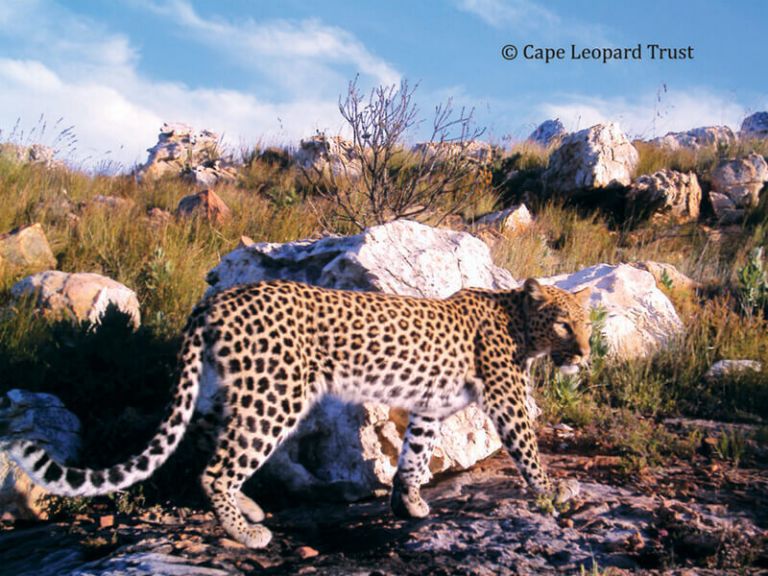On 20 December 2013, at its 68th session, the United Nations General Assembly (UNGA) proclaimed 3 March, the day of signature of the Convention on International Trade in Endangered Species of Wild Fauna and Flora (CITES), as UN World Wildlife Day to celebrate and raise awareness of the world’s wild animals and plants.
The theme for World Wildlife Day 2018 is ‘Big Cats: Predators under threat’. To mark the day, CapeNature would like to confirm our dedication and support for leopard conservation in the Western Cape. CapeNature works tirelessly with partners like the Cape Leopard Trust to facilitate and promote research in support of conserving predator diversity in the Western Cape.
The leopard fills the role of apex predator in the Western Cape. However, its conservation status remains uncertain. The species is regularly removed or exterminated from farms with little knowledge of population or genetic status, whether these removals are sustainable, or whether the factors giving rise to conflict are established.
Ongoing threats to leopards in the Western Cape include:
- habitat loss and fragmentation due to agricultural and urban development
- roads and traffic which act as barriers to dispersing individuals, dissect home ranges and lead to vehicle-related mortalities
- illegal hunting with snares or dogs for bushmeat
- direct persecution by farmers in retaliation for livestock depredation events
- poisons and pesticides which impact the health of predator populations in areas highly populated by humans
- human-induced increase in fire frequency and extent
In order to study these elusive creatures, camera traps with movement sensors were used to survey leopards in rugged mountain wilderness areas that are still relatively untouched by human development. The trap makes use of an infra-red beam – when an animal breaks the beam a photograph is taken.
Other animals are frequently snapped by the camera traps, providing useful information for conservation. The cameras are set up in places where leopard tracks, scat (droppings), scratch marks on trees or actual sightings have occurred.
Cape mountain leopards are unique in many ways: they are relatively small, typically half the size of other African leopards – because of this they are not usually a threat to human and there are no records of attacks on people. Their territories are vast, over ten times the size of other African leopards.
The research done by The Cape Leopard Trust in programmes like the Cederberg Project has revealed new information on population numbers and density, their home range requirements, habitat use or diet. The use of modern technology such as the remote-sensing cameras and GPS satellite tracking devices has provided remarkable insight into the ecology of these elusive animals.
On this World Wildlife Day, on 3 March 2018, we salute the efforts of the field workers, researchers and scientists who work tirelessly to map and research the role of predators like the Cape Leopard in the wider ecosystem so that we may better understand what is required to ensure their survival as apex predators in the rugged mountain areas of the Western Cape.
Source: http://www.capenature.co.za/world-wildlife-day-2018/

















